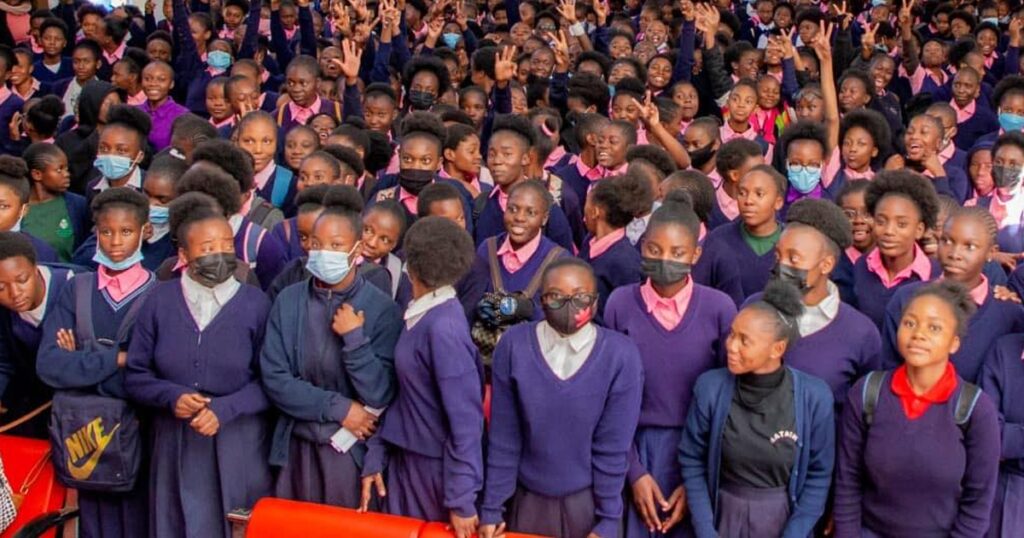Known for its vast wildlife and 70+ indigenous tribes and languages, the African country of Zambia sits landlocked in Sub-Saharan Africa. Unfortunately, from 1888 to 1964, Zambians were subjected to exploitation by Britain, which tore all political power as well as precious natural resources such as minerals from the hands of Zambia. Upon independence, Zambia had not just a struggling economy to repair, but according to The Encyclopedia Britannica, “one of the most poorly developed education systems of Britain’s former colonies, with just 109 university graduates and less than 0.5 percent of the population estimated to have completed primary education.”
The United Nations Educational, Scientific, and Cultural Organization (UNESCO) reported in January of 2024, that “The estimate is that a child born in Zambia today will reach only 40 percent of its potential.” According to UNESCO, This ‘estimate’ considers the probability that (i) a child will live past age five (94 percent); (ii) the average years of schooling completed by age 18 (8.8 years); (iii) the level of learning a child acquires (358 on a scale where 625 is advanced attainment and 300 is the lowest level of attainment); (iv) the learning-adjusted years of schooling that a child can complete, an estimate that combines the two previous probabilities (5 years); (v) the adult life expectancy (73 percent of 15-year olds surviving until age 60); and finally (vi) the likeliness that a child will not be stunted in early childhood development (65 percent).
Although the prospects of rehabilitating the education system seem weak, the government of Zambia is dedicated to nurturing the next generation of thinkers, creators, workers, and beyond. In 2018, Zambia started offering free primary education, and expanded these services to early childhood education (ECE) and secondary schools in 2021. As UNICEF Zambia reports, this is a result of Zambia’s Education-For-All policy, which “reflects President Hichilema’s dedication to enhancing educational practices and policies that empower Zambian children to reach their full potential.”
New Hope
Despite being a fairly recent implementation, the policy has been a beacon of hope for many students. “I stopped going to school in 2016 when I was in grade four,” 18-year-old Mariana Chirwa told BBC News in July of 2024. “Without free education I don’t know how my parents would have managed to take me back to school. They don’t work and just stay at home.” The Campaign for Female Education reveals that “only 27% of girls in Zambia complete upper secondary school, and among the poorest children this falls to 3%.” Furthermore, a disheartening 67% of children live below the international poverty line of $2.15 per day. As Fair Planet explains, “Millions of school children in Zambia now have hopes of attaining secondary level education following the free education policy…As [Zambia] joins a few others that have completely removed the biggest barrier to access to education on the continent.”

Room Left To Improve
Free education, for millions of underprivileged Zambian students, is a dream coming to fruition. However, a free-education system does not necessarily denote a capable education system. The BBC details a day at Chanyanya Primary and Secondary school, located south-west of the capital, Lukasa: “In one classroom, 75 boys and 85 girls are squeezed into a space that would comfortably fit only 30 pupils.” Teacher Cleopatra Zulu states, “Each and every day we receive new learners because of free education. Talking one-on-one is difficult, even marking is a challenge. We have even reduced the number of subjects that we are giving them.”
There’s no reason to be discouraged, though. The government says they have it all under control. Per Education Minister Douglas Syakalima, “This is a good problem. I’d rather let the children be in a congested classroom than in the street.” He goes on to claim, “The president launched mass production of desks, mass infrastructure-building is happening.” The Zambian government has also committed to building over 170 new schools and the recruitment of 50k+ new teachers by the end of 2026, 37,000 of which have reportedly been hired.
For now, there is no definitive evidence of academic success or improvement within Zambian students in correlation with the Education For All Policy, yet despite this uncertainty, we must applaud their dedication to fixing a system that is in such a state. What matters most is the prioritization of access to education. Now that that barrier has been mostly dismantled, the Zambian government must prioritize the quality of education. In a world as politicized, chaotic, and divided as ours right now, it is relieving and encouraging to see that some people, albeit few, are looking out for the young and disadvantaged. Now, we must wait to see if future administrations continue the efforts of President Hichilema.

